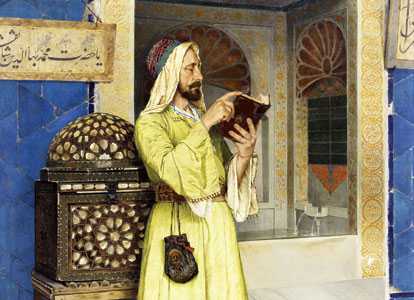ISTANBUL
This October, Istanbul will commemorate Osman Hamdi Bey, the Ottoman master of museum heritage. Pera Museum is hosting ‘Osman Hamdi Bey and the Americans: Archaeology, Diplomacy, Art,’ which provides visitors with a chance to rediscover the great scholar’s personal history.

A new exhibition at the Pera Museum is shedding light on the first excavations conducted by American archaeologists in the Ottoman Empire and the relations between the two states through the prism of one of the empire’s most famous scholars, Osman Hamdi Bey.
Exhibited on the third-floor gallery of the Pera Museum, “Osman Hamdi Bey and the Americans: Archaeology, Diplomacy, Art” is based on the intersecting lives of painter, archaeologist and museologist Osman Hamdi Bey, American archaeologist and photographer John Henry Haynes and German-born Assyriologist Professor Hermann Vollrath Hilprecht.
Osman Hamdi Bey (1842-1910), was an important Oriental painter who made substantial and lifelong contributions to various fields of culture and arts such as painting, archaeology, museums and art education.
The show, which began Oct. 15, is being curated by Professor Renata Holod and Professor Robert Ousterhout from the University of Pennsylvania and is displaying a rich selection of paintings by the Ottoman scholar, archaeological photographs and drawings from the 19th century, letters, travel journals, and archaeological artifacts for the first time in Turkey. “The Excavations at the Temple Court in Nippur” and “At the Mosque Door,” two paintings by Osman Hamdi Bey that have rarely been seen before, will also be exhibited for the first time in Turkey.
Unique selection from Osman Hamdi Bey
The unique selection is on loan from the University of Pennsylvania, the Istanbul Archaeological Museums, the Istanbul Museum of Painting and Sculpture, the Fine Arts Museum Boston and private collections. Two unknown works of Osman Hamdi Bey discovered at the Pennsylvania Museum will also be put on display.
In addition to the exhibition, Pera Museum is presenting a special ode to Osman Hamdi Bey with works from the Suna and İnan Kıraç Foundation Collection in its Sevgi and Erdoğan Gönül Galleries as part of its new Orientalist painting exhibition, “Intersecting Worlds: Ambassadors and Painters.”
Trained as a painter and sent to France to attend the Institution Barbet in 1860, Osman Hamdi Bey was expected to attend the Sorbonne to receive a law degree. He was more inclined to develop his artistic talents, however, and he studied painting with Gustave Boulanger in the studio of Jean-Léon Gérôme. His first administrative experience came in the province of Iraq under Mithat Pașa from 1869 to 1871. He spent the following decade in Istanbul engaged in various cultural and administrative activities in which he often served as the intermediary between Ottoman and European governments.
Personal history
Most notable was his appointment as director of the Imperial Museum in 1881 and his continuous leadership of the institution until his death in 1910. In 1882, he established the Sanayi-i Nefise Mektebi (School of Fine Arts) located next door to the museum on the model of France’s École des Beaux Arts, where he served as director and professor of painting. During his 30 years as the director of the Ottoman Imperial Museum, Osman Hamdi Bey did more than any of his contemporaries to establish control over archaeological activity within the Empire.
More than 100 years after his death, the legacy of Osman Hamdi Bey lives on in the works of academics, institutions and museums. He continues to make headlines and serve as a topic of heated debates.
The exhibition, which is being jointly organized by the Pera Museum and the University of Pennsylvania Museum of Archaeology and Anthropology, will continue until Jan. 8, 2012.
via Pera Museum commemorating Ottomans’ premier scholar – Hurriyet Daily News.

Leave a Reply